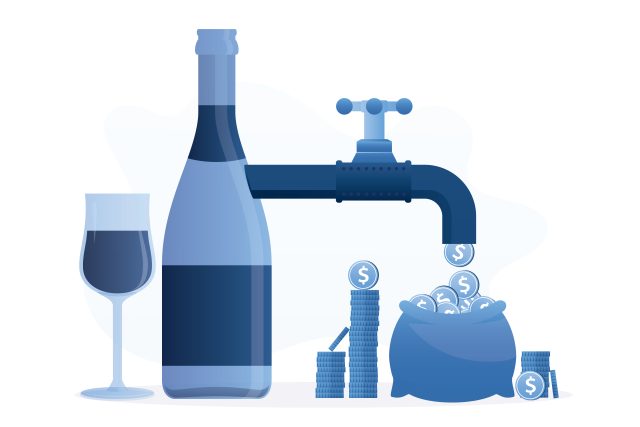This website uses cookies so that we can provide you with the best user experience possible. Cookie information is stored in your browser and performs functions such as recognising you when you return to our website and helping our team to understand which sections of the website you find most interesting and useful.
Global alcoholic drinks sector to reach US$2.74 trillion by 2032
The global alcoholic drinks sector is due to experience a “robust” expansion, reaching US$2.74 trillion by 2032, according to a new report.

The data, based on information gathered by Research & Markets analysts, shows that the upspike will come from “leading companies collaborating with celebrities and integrating cultural nuances to stay dominant”. The findings also identified how the global alcoholic drinks sector is anticipated to see a compound annual growth rate (CAGR) of 5.02% from 2024 to 2032.
According to the research, the industry’s potential growth can be attributed to several factors, including “population growth, increased disposable income, changing consumer tastes, and heightened environmental concerns”. Giving a hint of what is to come, the analysts assured that these trends “are transforming the production and consumption patterns within the sector, driving demand, and encouraging manufacturers to innovate responsibly”.
The research shows that emerging markets are a pivotal force in the sector with the analysts having highlighted that with “the population of developing countries standing at approximately 6.82 billion, there is a notable demand for alcoholic beverages, bolstered by the rise of disposable incomes”. Plus, it was also noted that “the burgeoning middle class in these regions is more willing than ever to indulge in discretionary purchases, including alcoholic products” and that “this trend, combined with the significant economic growth projected for emerging markets, is set to supercharge the industry’s prospects”.
Another trend being eyed that was flagged in the data was that of consumer preferences which are “rapidly evolving”. One such observation shone a light on the fact that “the push for premium products is evident, particularly in the spirits category” but was also followed with newer trends such as health-conscious consumers “demanding more sustainable alternatives, with greater emphasis on environmentally friendly packaging” and an “increase in online alcohol sales”.
The report revealed how the “Asia-Pacific region is at the forefront of the market’s growth, thanks to its massive population and growing economies” and stated that “China and India are central to this upswing, with their vibrant middle-class demographics influencing spending patterns” while “the region’s diverse cultural preferences dictate a varied market for alcoholic beverages, offering significant opportunities for customised and localised products”.
It was also observed how “prominent companies within the global alcoholic drinks sector are making strategic moves to align with market trends and consumer preferences” and this was coming in the form of “collaborations with celebrities” and the “integration of cultural nuances in product offerings [which are now beginning to] exemplify the tailored approach these brands are taking”.

